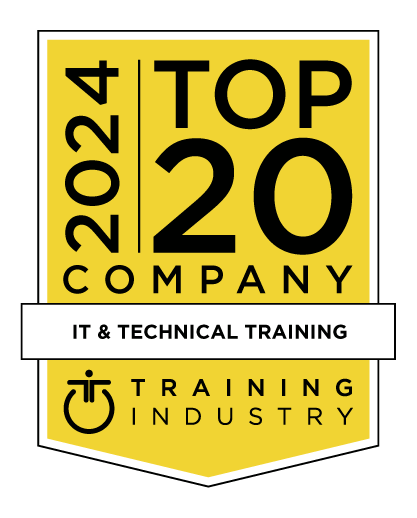title
Please take a moment to fill out this form. We will get back to you as soon as possible.
All fields marked with an asterisk (*) are mandatory.
Understanding Cisco Collaboration Foundations (CLFNDU)
Course Description
Overview
The Understanding Cisco Collaboration Foundations (CLFNDU) training shows you how to support a Cisco® Unified Communications Manager (UCM) solution with Session Initiation Protocol (SIP) gateway.The Understanding Cisco Collaboration Foundations (CLFNDU) training gives you the skills and knowledge needed to administer and support a simple, single-site Cisco® Unified Communications Manager (UCM) solution with Session Initiation Protocol (SIP) gateway. The training covers initial parameters, management of devices, management of users, and management of media resources.
The Understanding Cisco Collaboration Foundations (CLFNDU) training gives you the skills and knowledge needed to administer and support a simple, single-site Cisco® Unified Communications Manager (UCM) solution with Session Initiation Protocol (SIP) gateway. The training covers initial parameters, management of devices including phones and video endpoints, management of users, and management of media resources, as well as Cisco Unified Communications solutions maintenance and troubleshooting tools. In addition, you will learn the basics of SIP dial plans including connectivity to Public Switched Telephone Network (PSTN) services, and how to use class-of-service capabilities.
This training does not lead directly to a certification exam, but it does cover foundational knowledge that can help you prepare for several Cisco Certified Network Professional (CCNP) and other professional-level collaboration trainings and exams. This training also earns you 21 Continuing Education (CE) credits toward recertification.
This training will help you:
- Administer a single-site Cisco Unified Communications Manager, handling daily tasks such as add, moves, changes and deletions of phones, video endpoints, and users
- Configure Jabber devices and implement common endpoint features including call park, shared lines, pickup groups, and phone button templates
- Introduce you to the SIP protocol, how calls are connected, and how media codes are determined
- Introduce you to the capabilities and basic configuration of an SIP gateway for PSTN access
- Introduce you to the dial plan elements used to route calls, and the class-of-service capabilities to control who can route calls where
- Administer Cisco Unity Connection handling daily tasks such as add, moves, and changes and deletions of voicemail boxes and users
- Administer maintenance tasks and use the troubleshooting tools available on Cisco Unified Communications Manager and Cisco Real-time Monitoring Tool
- Earn 21 CE credits toward recertification
Objectives
- Describe benefits of using Cisco collaboration solution, collaboration deployment models, and components of collaboration solution in on-premises, cloud, and hybrid deployments
- Explore different codecs used in voice and video calls and explain how SIP signaling is used to set up and teardown calls
- Identify Cisco Unified Communications Manager User Types and use Active Directory to manage Users in Cisco Unified Communications Manager
- Identify the appropriate Cisco Unified IP Phone software solution for registration, recognize different Cisco Unified IP Phone models and their supported software, and identify various models of Webex video endpoints
- Provide an understanding of Cisco Unified Communications Manager, including its deployment models, cluster architecture, network requirements, collaboration services, administration tools, and redundancy strategies to design, implement, and maintain robust collaboration networks
- Examine the lifecycle of Cisco collaboration endpoints
- Understand the dial plans and call routing in Cisco Unified Communications Manager including the key components, digit manipulation techniques, translation patterns, and practical skills to create and configure a basic dial plan
- Configure a class of service elements in the Cisco Unified Communications Manager
- Provide an overview of the reporting and maintenance tools available for managing and monitoring Cisco Unified Communications systems
- Analyze media resources within Cisco Unified Communications systems, including conferencing solutions, transcoders, media termination points, and music on hold, to optimize their configuration and usage
- Describe the differences between a rendezvous, Meet-Me and ad hoc conference, describe how to create a SIP Trunk for Cisco Meeting Server in Cisco Unified Communications Manager, and how to set up media resources to support ad hoc and Meet-Me conferences
- Analyze the deployment, integration, and use cases of Cisco Instant Messaging and Presence Service alongside Cisco Unified Communications Manager to optimize communication through scalable, redundant, and secure solutions
- Evaluate the features, deployment options, and integration of Cisco Jabber with Cisco Unified Communications Manager to optimize communication workflows, enhance team collaboration, and provide a smooth transition to modern communication solutions
- Analyze Cisco Unity Connection components, architecture, and call handlers, focusing on the system’s deployment, configuration, and user management to optimize communication workflows and enhance user experience
- Describe the Cisco Edge Services Components
- Analyze the architecture and configuration of Cisco Expressway Zones, as well as the role of Search Rules, security certificates, and encryption strategies to enable efficient and secure voice, video, and collaboration services between internal and external networks
- Analyze the architecture and configuration of Cisco Unified Border Element, including its key features for signaling and media interworking, security demarcation, toll-fraud prevention, and call admission control to enable secure, cost-effective voice and video connectivity across disparate VoIP networks
- Describe how to access the Control Hub and navigate the menus to setup a Webex collaboration solution
- Introduce User administration in Control Hub
- Explore the registration process to Control Hub
- Examine Webex Calling options using the Control Hub
- Explore admin-configurable features and user configurable features in Webex calling
- Describe Reporting and Maintenance
- Provide a technical understanding of Cisco Webex cloud and hybrid media resources, including voicemail management, Edge Audio, and Video Mesh
- Describe Cisco Webex Hybrid Cloud Connected Unified Communications
- Describe Webex Hybrid Services
Audience
- Students preparing to take the CCNP Collaboration certification
- Network administrators
- Network engineers
- Systems engineers
Prerequisites
-
This training is intended to be an entry-level course. There are no specific prerequisite Cisco courses; however, the following skills are required:
- Internet web browser usability knowledge and general computer usage
- Knowledge of Cisco Internetwork Operating System (Cisco IOS®) command line
Topics
- Collaboration Technology and Benefits
- Codecs and Call Signaling
- User Management in Cisco Unified Communications Manager
- Endpoints and Phones
- Initial Parameters Administration for Cisco Unified Communications Manager
- Registration Process to Cisco Unified Communications Manager
- Basic Dial Plan
- Class of Service
- Reporting and Maintenance
- Media Resources
- Cisco Meeting Server Integration with Cisco Unified Communications Manager
- Cisco Instant Messaging and Presence Service
- Soft Client Registration to Cisco Unified Communication Manager
- Cisco Unity Connection
- Edge Services
- Cisco Expressway Series
- Cisco Unified Border Element
- Control Hub
- User Management in Control Hub
- Registration Process to Control Hub
- Webex Calling Options
- Webex Calling Features
- Cloud Management and Troubleshooting
- Cloud and Hybrid Media Resources
- Cisco Webex Hybrid Cloud Connected Unified Communications
- Cisco Webex Hybrid Services
- Create a Local User Account and Configure LDAP
- Configure Cisco Unified Communication Manager Initial Parameters
- Configure Cisco Unified Communications Manager Core System Settings
- Deploy an IP Phone Through Manual Registration
- Create a Basic Dial Plan
- Explore Partitions and CSSs
- Use Reporting and Maintenance Tools
- Register Cisco Meeting Server to Cisco Unified Communications Manager
- Register Cisco Jabber Client to Cisco Unified Communications Manager
- Configure the Integration Between Cisco Unity Connection and Cisco Unified Communications Manager
- Manage Cisco Unity Connection Users
- Explore the Configuration of Traversal Zones in Cisco Expressway
- Explore the Cisco Unified Border Element Interoperability between VoIP Networks
- Explore the Configuration of Webex Control Hub
- Add Users to Webex Control Hub
- Configure Webex Calling Using Cisco Calling Plans
- Configure Webex Calling Features in Control Hub
Related Courses
-
Implementing Cisco Advanced Call Control and Mobility Services (CLACCM)
CSC-CLACCM- Duration: 5 Days
- Delivery Format: Classroom Training, Online Training
- Price: 4,295.00 USD
-
Implementing Cisco Collaboration Cloud and Edge Solutions (CLCEI)
CSC-CLCEI- Duration: 5 Days
- Delivery Format: Classroom Training, Online Training
- Price: 4,300.00 USD
Self-Paced Training Info
Learn at your own pace with anytime, anywhere training
- Same in-demand topics as instructor-led public and private classes.
- Standalone learning or supplemental reinforcement.
- e-Learning content varies by course and technology.
- View the Self-Paced version of this outline and what is included in the SPVC course.
- Learn more about e-Learning
Course Added To Shopping Cart
bla
bla
bla
bla
bla
bla
Self-Paced Training Terms & Conditions
Exam Terms & Conditions
Sorry, there are no classes that meet your criteria.
Please contact us to schedule a class.

STOP! Before You Leave
Save 0% on this course!
Take advantage of our online-only offer & save 0% on any course !
Promo Code skip0 will be applied to your registration
Purchase Information
title
Please take a moment to fill out this form. We will get back to you as soon as possible.
All fields marked with an asterisk (*) are mandatory.










